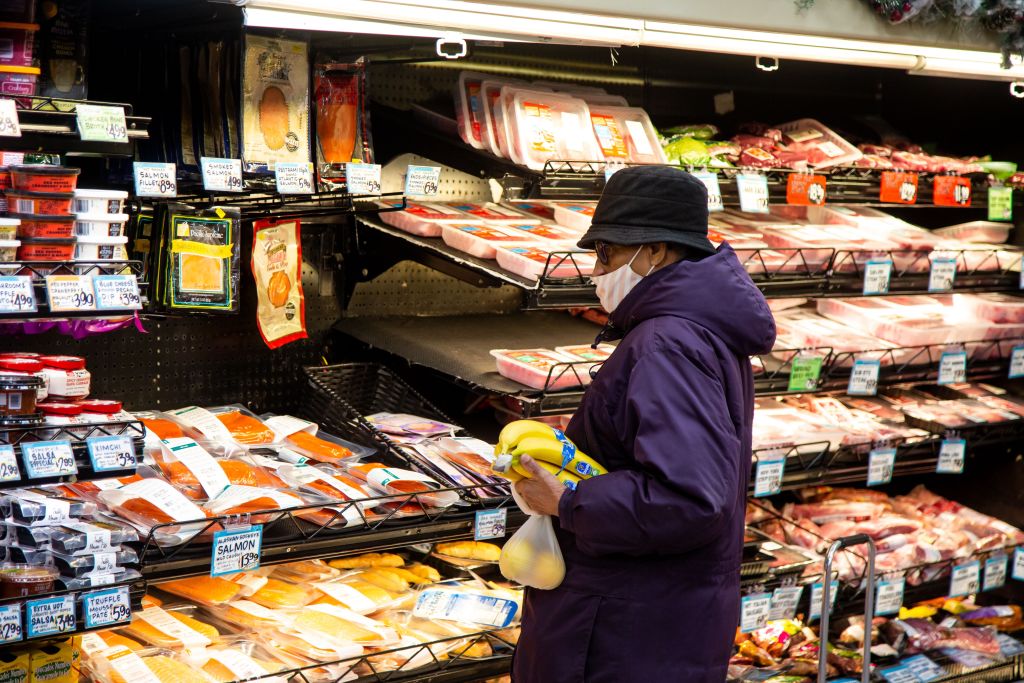The cost of living is 7.1% higher than it was a year ago, according to the November consumer price index (CPI). While the inflation crisis is finally slowing down, food prices continue to wreak havoc on US households. From eggs to milk to bread, grocery bills are still climbing year-over-year or month-over-month. But President Joe Biden is taking a victory lap because food inflation ostensibly slowed – conveniently choosing non-seasonally adjusted to seasonally adjusted – although shoppers would chuckle at this notion. Will heading to the supermarket ever return to the days when consumers did not have to sell their grandfather’s antique pocket watch to the pawnbroker?
Food Prices Jump in November
 The monthly snapshot of how much it costs to live in America offered a few interesting tidbits of information. The first is that essential goods and services, be it shelter or energy, were more expensive in November compared to last year. The second is that overall inflation peaked this past summer when it reached 9.1%. The final revelation is that food prices – the stuff you buy at the local supermarket – are stubbornly high and will not come down for the foreseeable future.
The monthly snapshot of how much it costs to live in America offered a few interesting tidbits of information. The first is that essential goods and services, be it shelter or energy, were more expensive in November compared to last year. The second is that overall inflation peaked this past summer when it reached 9.1%. The final revelation is that food prices – the stuff you buy at the local supermarket – are stubbornly high and will not come down for the foreseeable future.
The Bureau of Labor Statistics (BLS) published the November 2022 CPI report on Dec. 13, highlighting that food prices increased at an annualized rate of 10.6%, easing from 10.9% in October. Food at home surged by 12%, while food away from home swelled by 8% from November 2021.
Whether measured month-over-month or year-over-year, most of the food products on the BLS list increased. Here were some of the biggest gains within this category:
- Eggs: +49.1%
- Margarine: +47.4%
- Butter: +27%
- Lettuce: +19.8%
- Potatoes: +16.2%
- Bread: +15.7%
- Milk: +14.7%
- Coffee: +14.6%
- Poultry: +13.1%
Wait a minute. Why is meat not on this list? Earlier this year, the price of everything, from beef and veal to pork to ham, had been skyrocketing. This is not because the White House suddenly cured the nation’s meat problem. Instead, according to industry observers, elevated prices in this area of the food market still have more room for growth. First, short-term relief is being caused by liquidation by farmers who are shipping their cattle to slaughter early amid feed and water challenges. Second, fewer cattle will cause long-term pain at the dinner table in 2023 and less beef in 2024.
But perhaps this is chewing the fat a bit too much.
Of course, this is not only a problem facing the United States. The United Nation’s FAO Food Price Index (FFPI), which came in at 13.7 in November, shows that most of the planet is facing a similar crisis. Meat, dairy, and cereals are considerably higher than they were the same time a year ago, although vegetable oils and sugar are down. This makes sense when combing through the commodities futures market, assessing the significant cost of diesel, observing the labor shortages, and realizing that there is still a supply chain crisis.

(Photo by Michael Nagle/Xinhua via Getty Images)
Could the downward trend reverse? At this point, it is unlikely. This does not mean that food prices will return to pre-pandemic levels. In fact, it might be far from these prices. The problem with inflation is the ratchet effect: prices are easy to spike but hard to tumble. A can of red kidney beans may now cost $3.99 at the neighborhood grocery store and will stay that way outside of supply management, inventories, and company specials. In addition, the erosion of the dollar’s purchasing power will mean that it will take more units of currency to cover the cost of that can of red kidney beans.
Inflation Is Evil
Remember last year when administration officials suggested inflation was a rich person’s problem or that the soaring cost of living was a sign of economic progress? A couple of things on this front. The first is that inflation is an odious tax that can decimate a household’s financial situation. The second is, if the White House really believed that, then why would anyone in Washington be pushing for the Inflation Reduction Act? Unfortunately, after a decade of tepid inflation, the Swamp’s diatribes are proving to be fables rather than match what reality is proving to everyone in real-time: Swamponomics, be it budget deficits or inflation, only lead to human suffering.
Plus, all the gains that have transpired since the end of the pandemic days seem to be all for naught when considering that real wages (inflation-adjusted) have slumped for 21 consecutive months, sliding 1.9% in November. And, according to the BLS: “The change in real average hourly earnings combined with a decrease of 1.1 percent in the average workweek resulted in a 3.0-percent decrease in real average weekly earnings over this period.” But Americans do not need to worry because, according to President Biden, families can simply switch to another brand of raisin bran cereal!



